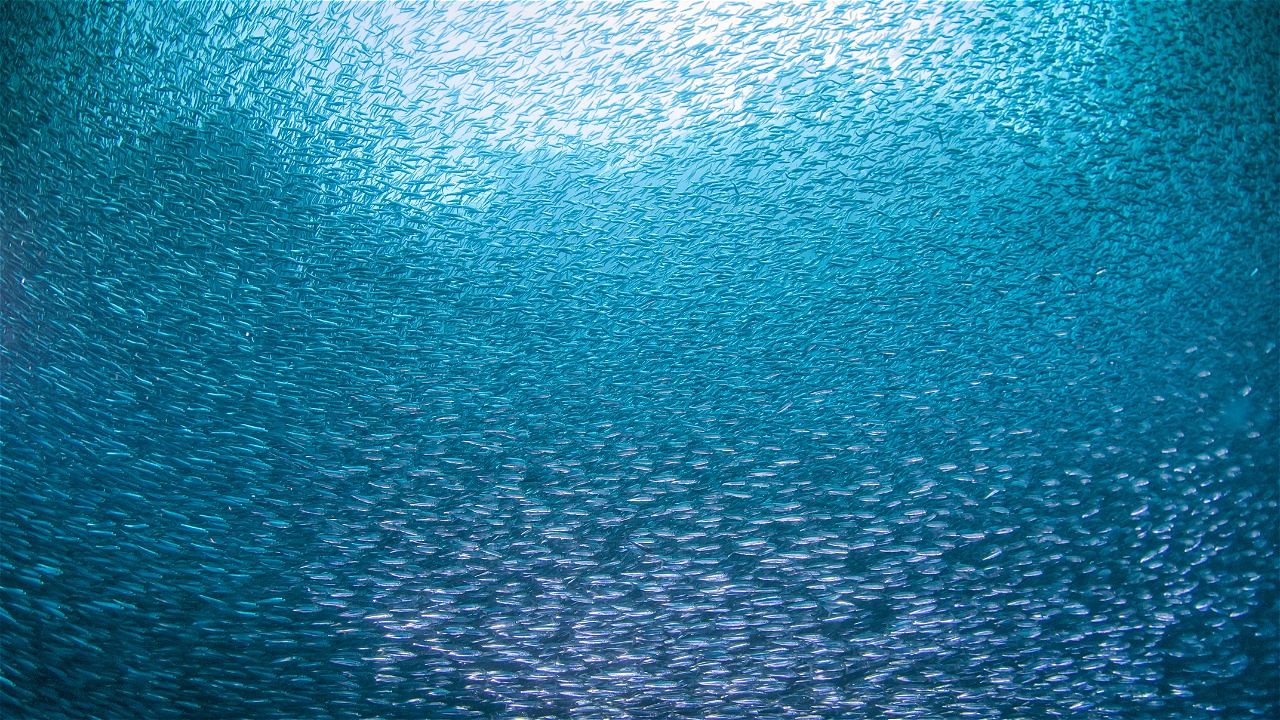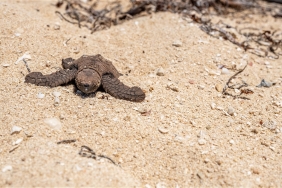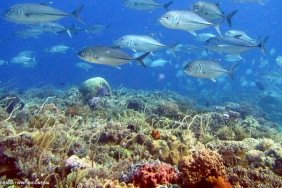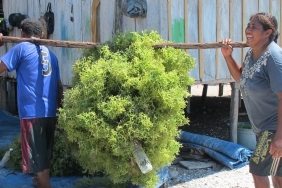TEMBANG FISH HARVEST DURING THE OPEN SASI MOMENT OF THE WERKA INDIGENOUS COMMUNITY
By: Rizal (Community Rights Based Management Officer for Inner Banda Arc Subseascpace, WWF-Indonesia)
That day (21/04) has been long awaited by the indigenous people of Werka Village, Kei Besar District, Southeast Maluku. They held the traditional ritual of buka sasi (yot) for the harvest of tembang fish (Sardinella sp), after being banned from being taken since October 5, 2016.
Since long ago, the Werka community has consistently protected the area in the form of sasi, which means the restriction of resource utilization through the prohibition of taking marine resources within a certain period of time.
In local terms, sasi is called yot. Yot in Werka Village is still applied today to resources in the sea and land, including tembang fish, a seasonal small pelagic in their waters.
Early November to May is the time for tembang fish to grow up, reaching a size of 15-23 cm. Therefore, only on that day, sasi is opened specifically for tembang fish, when they have reached their maximum size.
The catch of tembang fish that day is recorded in terms of number, size, weight, and species. This data is to be used as a comparison for next year's sasi opening, which will later become a recommendation for future sasi management.
The traditional court started the procession of revocation of hawear (sasi marker). King Werka rang the bell seven times, summoning the seven clan heads to the traditional house to begin the session, discussing the technicalities of the procession to open sasi that day.
The king and village officials performed betel nut rituals and read prayers by the priest in the south of Werka Village, approximately 400 meters from the village center. This was the location of sasi for the past year - a river mouth surrounded by mangrove forest vegetation. Seven clan chiefs then symbolically open the sasi, followed by residents who take tembang fish there.
The opening ceremony was made even more special by the presence of media crews from Trans7, Ambon Express, and RRI to cover the event. WWF-Indonesia was also proud to attend this important procession in the practice of indigenous and community-based conservation (ICCAs) that has been intensified.
For the Werka indigenous community, the protection of marine resources in the form of conservation has three benefits at once, namely ecological, social and economic benefits. In terms of ecology, sasi protects marine resources such as tembang fish, mangrove, lola, sea cucumber, and laga stone. From an economic perspective, when hawear is removed, marine resources are plentiful, either for consumption or resale.
In social life, sasi plays a role in building public awareness to better protect marine resources. The implementation of sasi is an effort by the Werka community to maintain the traditions passed down from their ancestors.
"Sasi is an affirmation of identity and recognition of the Lor Lobay Kingdom in Ohoi Werka," said the King of Werka, J.P. Reneut. "When the sasi is open, the residents of Ohoi Werka together with the surrounding ohoi communities together utilize marine resources. Sasi also plays a role in improving inter-village harmony and harmony," he continued.
Uniquely, in fact, ohoi neighbors are prioritized to catch tembang fish first. After the neighboring villagers are finished, only then do the people of Werka make the catch. Isn't this exemplary? Custom-based conservation done with, by and for the community.




